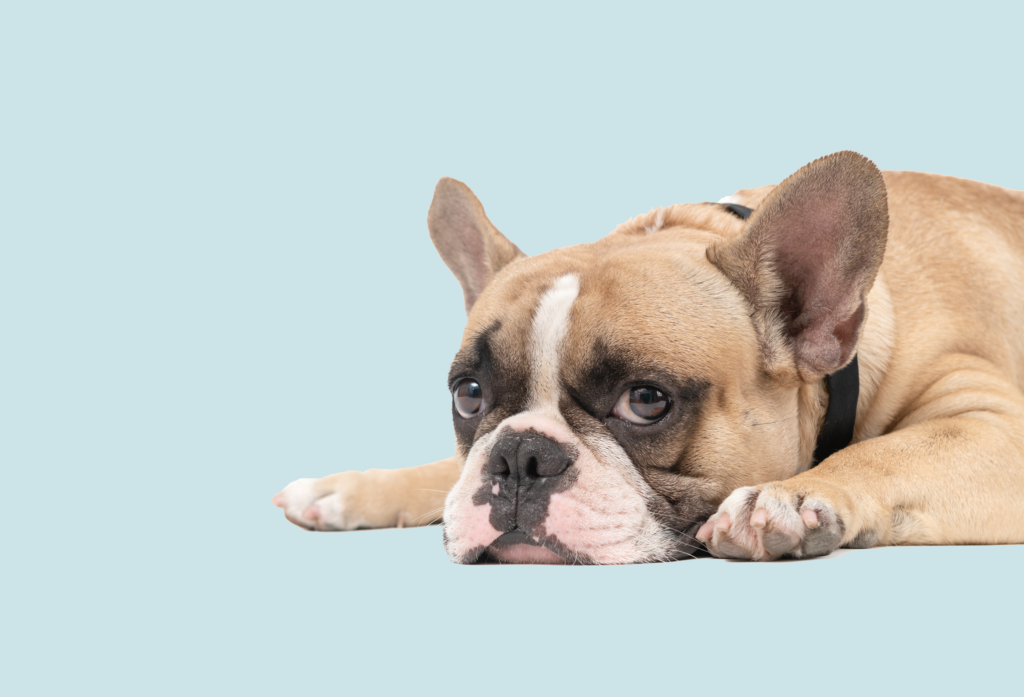It’s normal for your dog to feel stressed from time to time. But too much stress in dogs can lead to long-term behavior problems, like anxiety.
Stress in dogs can be caused by various things, from loud noises like fireworks to new places. A change in routine can also cause it.
How to recognize the signs of stress in dogs
By knowing what to look for, you can decrease the stress your dog may be experiencing and prevent potential problems in the future.
Subtle signs your dog might be stressed include:
- yawning – except your dog is tired
- panting – often with a curled tip of their tongue instead of relaxed
- pacing back and forth
- licking their lips
- ears pinned back
- dilated pupils or red around the eyes
- whites of their eyes showing (whale eye)
Clear signs your dog might be stressed include:
- loss of appetite
- backing away from a situation or someone
- tail tucked between their legs
- cowering (crouching or shrinking down)
- diarrhea or increased bowel movements
- trembling or shivering (when they’re not cold or excited)
Some of these signs may similarly be caused by a health problem and you should talk to a veterinarian if you are concerned.
What causes stress in dogs?
Dogs can become stressed because they are frustrated, bored, anxious or scared.
For many dogs, being around a stressed family will be enough to affect them, as dogs can feel when things aren’t quite right.
Dogs can also be influenced by a change in routine, such as less exercise. This can drive to excess energy with nowhere for it to go. Or your dog might become stressed when going out to public areas following lockdown. Remember that your dog has grown used to being at home too and that they may need extra help to help them get used to busy areas again.
Defensive behaviours
Sometimes dogs who feel anxious or threatened may use more apparent signs to show they are stressed or afraid. This usually means they urgently want to end something happening or be away from something or someone. Some of these behaviors involve:
- staring and stiffening
- growling
- showing teeth or flashing
- snapping
- biting
Dogs are likely to have given other signs of stress before this, so it’s essential to recognize these early signs to stop unwanted behaviors.
How to help calm a stressed dog
Recognizing the stress in dogs is the first step. You can do lots to aid your pet feel less stressed and more comfortable once you know what to look for. Understanding the problem of stress in dogs will also help you choose the most reliable way to help your dog calm down.
Give your dog time away
Avoiding or removing your dog from a stressful position will help, whether that’s in or outside your home. For example, you could create a separate space away from excited children with a safety gate or create a homely bed or crate for them to rest where they won’t get disturbed.
Exercise your dog
Most dogs love going for walks! Not only are they good for their physical health, but walks will improve your dog’s mental wellbeing too, having lots of things to sniff, look at and enjoy. However, keep in mind that you must keep your dog on a lead if walking near livestock.
Stay nice and calm
Many dogs are susceptible to their owner’s emotions. If your dog is stressed, keep calm and try not to panic or raise your voice, which might add to stress in dogs levels.
Keep your dog entertained
There are lots of things you can do indoor to keep your dog entertained. This can help keep their mind concentrated and distracted from things they find stressful.
Don’t tell them off
Don’t punish your dog, mainly if they’re showing defensive behaviors, as this is likely to make them yet more stressed. Telling them off may mean they stop one behavior, such as growling, but start snapping or biting instead.
How coming out of lockdown is affecting our dogs
Coronavirus restrictions meant that you and your dog might have been spending more time at home. As restrictions ease, it’s essential to make sure that you support your dog adjusting to any changes to their routine, such as revisiting public places.
Puppies in lockdown
We’ve seen a massive increase in the number of people getting puppies in the last year. With limitations and social distancing, it’s been harder to socialize your young dog and get them used to new experiences, but there are lots you can do to make sure puppies in lockdown don’t miss out!
Separation anxiety in dogs
When you leave your dog or return to work, you may notice the anxiety or stress in dogs. Although dogs will get used to being left for short periods, they may need more training not to get stressed following lockdown.
Visiting busier places
As restrictions ease, you may want to go to a busy place with your dog. However, many of our dogs won’t be used to seeing lots of people or being in new, strange places, mainly having been at home for so long.
During the school holidays
Children don’t always get the signs telling them a dog might need space. Children and dogs often have solid bonds, but you must supervise their time together. And you must help your child to understand that, just like us, dogs do not always feel like being hugged or playing.
Advice for parents
Some dogs might feel uncomfortable or stressed if they have more attention from children than natural. Sometimes children can not understand a pet’s need for space; also, they might be a bit rough.
